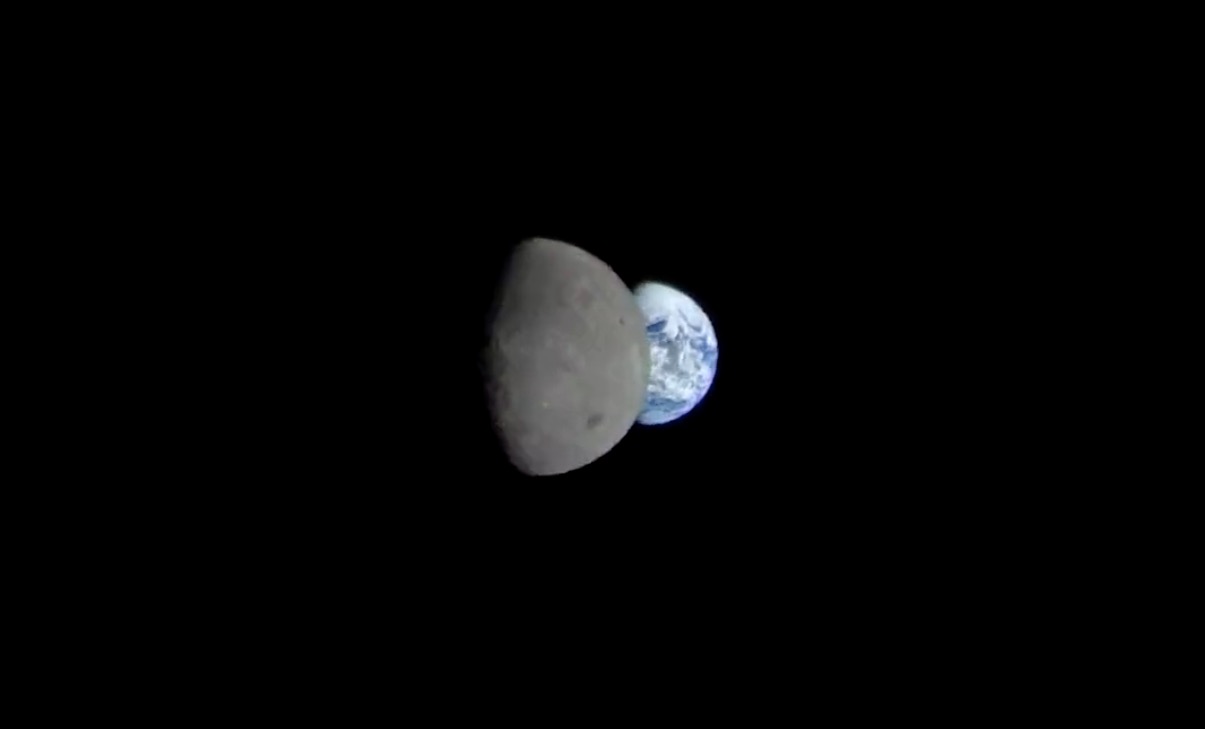Watch the moon eclipse Earth in stunning video from Artemis 1's Orion spacecraft
The amazing imagery keeps on coming from NASA's Artemis 1 moon mission.
Artemis 1's uncrewed Orion capsule has been beaming home great shots of Earth and its natural satellite since lifting off atop a Space Launch System rocket on Nov. 16.
NASA shared yet more of this eye candy on Wednesday (Dec. 7), in a Twitter post that celebrated another famous moon mission.
"50 years ago, the Apollo 17 astronauts captured an iconic Earth view of the 'Blue Marble' as they set sights on the moon. Today with #Artemis, this time-lapse footage showcases the Earth-moon transit as @NASA_Orion captured our home planet and the moon on flight day 13," NASA's Johnson Space Center tweeted.
In photos: Artemis 1 launch: Amazing views of NASA's moon rocket debut

Flight day 13 was Nov. 28, the day that Orion ventured the farthest from Earth that it will get during the Artemis 1 mission. That distance — 268,563 miles (432,210 kilometers) — is the new record for a spacecraft designed to carry humans.
The previous distance mark was held by NASA's near-disastrous Apollo 13 mission, which had to loop around the moon rather than land in April 1970 after suffering a serious failure not long after liftoff.
Breaking space news, the latest updates on rocket launches, skywatching events and more!
Orion was still looping around the moon on Nov. 28; it arrived in a lunar distant retrograde orbit on Nov. 25 and departed from that path on Dec. 1.
On Dec. 5, the capsule performed a 3.5-minute-long engine burn during a close flyby of the moon, a maneuver that set the capsule on course for Earth. If all goes according to plan, Orion will return to its home planet with a Pacific Ocean splashdown on Dec. 11, bringing an end to the Artemis 1 mission.
Dec. 11 was also an important date for Apollo 17. On that day in 1972, astronauts Gene Cernan and Harrison Schmitt landed on the moon in their lunar module, named Challenger. The duo explored the lunar surface for 75 hours before rejoining crewmate Ronald Evans in the command module in lunar orbit. The trio returned to Earth on Dec. 19, 1972.
No astronaut has been back to the moon since, but NASA is working to change that with its Artemis program. The agency aims to launch astronauts around the moon on Artemis 2 in 2024 and put boots down near the lunar south pole a year or two later on the Artemis 3 mission.
Mike Wall is the author of "Out There" (Grand Central Publishing, 2018; illustrated by Karl Tate), a book about the search for alien life. Follow him on Twitter @michaeldwall. Follow us on Twitter @Spacedotcom or Facebook.

Michael Wall is a Senior Space Writer with Space.com and joined the team in 2010. He primarily covers exoplanets, spaceflight and military space, but has been known to dabble in the space art beat. His book about the search for alien life, "Out There," was published on Nov. 13, 2018. Before becoming a science writer, Michael worked as a herpetologist and wildlife biologist. He has a Ph.D. in evolutionary biology from the University of Sydney, Australia, a bachelor's degree from the University of Arizona, and a graduate certificate in science writing from the University of California, Santa Cruz. To find out what his latest project is, you can follow Michael on Twitter.
